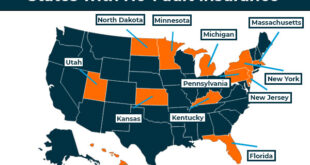Student Loan Assistance: Navigating College Debt Relief Paying off student loans can feel overwhelming, but the right assistance can ease the burden and help you regain financial freedom. In this guide, we explore student loan assistance programs, tips, and resources designed to simplify repayment and lighten your debt load. Whether you’re just starting repayment or struggling to keep up, this comprehensive article offers actionable advice to help you take control of your student loans.
What Is Student Loan Assistance?
Student loan assistance refers to programs, resources, and tools designed to help borrowers manage or reduce their student debt. These options may include loan forgiveness programs, income-driven repayment plans, and debt consolidation services.
Types of Student Loan Assistance
1. Loan Forgiveness Programs
- Public Service Loan Forgiveness (PSLF): Available for individuals working in qualifying public service jobs.
- Teacher Loan Forgiveness: Provides up to $17,500 in forgiveness for qualified educators.
2. Income-Driven Repayment Plans (IDR)
- Adjusts your monthly payment based on your income and family size.
- Examples include Income-Based Repayment (IBR) and Pay As You Earn (PAYE).
3. Student Loan Refinancing
- Consolidates your loans into one monthly payment with a potentially lower interest rate.
- Best for borrowers with stable incomes and good credit scores.
4. Deferment and Forbearance
- Temporary options to pause payments during financial hardship.
- Interest may still accrue, depending on the loan type.
Benefits of Seeking Assistance
- Lower Monthly Payments: Tailored repayment plans reduce financial strain.
- Debt Forgiveness Opportunities: Eliminate a portion of your loan under specific conditions.
- Improved Financial Stability: Assistance programs can help balance your budget.
- Avoid Default: Ensures you stay on track with payments, protecting your credit score.
How to Apply for Student Loan Assistance
- Assess Your Loan Type: Identify whether you have federal or private loans.
- Contact Your Loan Servicer: They can guide you through available options.
- Submit Necessary Documentation: Ensure timely submission of forms to avoid delays.
- Stay Updated: Regularly check for new programs and policy changes.
Common Challenges and How to Overcome Them
1. Confusion About Eligibility
- Solution: Use online tools or consult loan counselors to clarify eligibility requirements.
2. High Application Volume
- Solution: Apply early and follow up regularly to ensure your application is reviewed.
3. Long Processing Times
- Solution: Be proactive in providing complete and accurate information.
10 Tips for Managing Student Loans Effectively
- Explore All Assistance Options: Research federal, state, and private programs.
- Automate Payments: Ensure timely payments to avoid penalties.
- Refinance When Possible: Consolidate loans to secure better terms.
- Build a Budget: Allocate funds specifically for loan payments.
- Utilize Tax Benefits: Deduct student loan interest on your tax return.
- Track Loan Balances: Stay informed about your remaining debt.
- Communicate with Lenders: Inform them immediately about financial hardships.
- Seek Professional Advice: Loan counselors can provide personalized recommendations.
- Prioritize High-Interest Loans: Pay these off first to save money over time.
- Stay Informed: Follow news about new policies or changes in repayment plans.
10 FAQs About Student Loan Assistance
- What is the difference between federal and private student loans?
Federal loans are government-backed with fixed interest rates, while private loans come from banks or credit unions with varying terms. - Can I combine federal and private loans?
No, you can only refinance private loans together or separately consolidate federal loans. - What happens if I default on my loan?
Your credit score may drop, and your wages could be garnished. - Are forgiveness programs taxable?
Some forgiven amounts are considered taxable income, depending on the program. - Can I switch repayment plans?
Yes, federal loans allow borrowers to change plans based on financial needs. - How long does it take to get forgiveness?
Programs like PSLF require 120 qualifying payments, approximately 10 years. - Is loan refinancing the same as consolidation?
No, refinancing secures a new interest rate, while consolidation merges loans. - What is the interest rate cap for federal loans?
Federal loans have a fixed interest rate that varies by disbursement year. - Does applying for assistance impact my credit score?
Most programs do not affect your credit, but missed payments do. - Can I apply for multiple assistance programs?
Yes, but you must meet the eligibility criteria for each.
Conclusion
Student loan assistance is a powerful tool for reducing debt and achieving financial stability. By exploring available options like forgiveness programs, income-driven plans, and refinancing, you can create a strategy tailored to your unique circumstances.
Taking control of student loans starts with understanding your resources. Stay informed, seek professional guidance when needed, and implement practical tips to ease the repayment process. With the right approach, financial freedom is within reach.
 Gerbang Finance
Gerbang Finance

